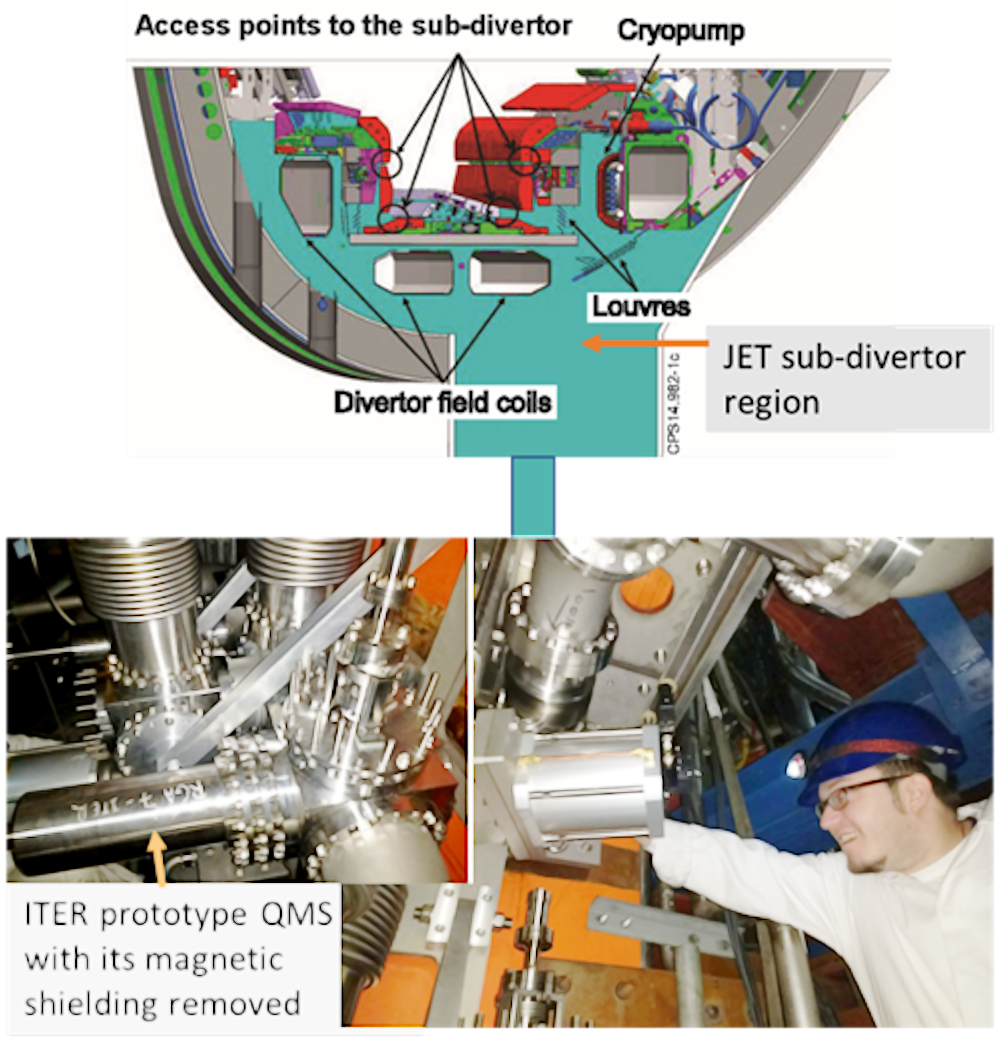ITER Radiation Hardness Assurance Policy was recently revised calling for stricter neutron exposure limits for the electronics in systems critical to plasma operations. The ITER Diagnostic Residual Gas Analyzer (DRGA) will measure the distribution of gas species, i.e., deuterium, tritium, and impurities, in the divertor exhaust stream and in the plasma periphery, and it requires Quadrupole Mass Spectrometer sensors to be placed near plasma in high radiation environment in Port Cell. Adding a novel, Si electronics-free, RF-matching circuit on the Port Cell side removes 15m earlier cable-length limit allowing QMS electronics to be placed in neutron-free environment. An 80m-cable prototype QMS unit, based on the Hiden HAL commercial QMS and using this cable solution, was shown in the laboratory to even better resolve fusion-relevant mass species than the corresponding 15m-cable solution, previously developed for (and recently installed on) Joint European Torus (JET). This improved performance, mostly due to the impedance matching circuit, was then demonstrated on JET in plasma operations just prior to the second deuterium-tritium campaign (DTE2). These operations are the equivalent of the pre-fusion plasma (PFPO-1 and PFPO-2) anticipated in ITER ca. 2028. The experience on JET with this ITER-compatible QMS, jointly developed by Hiden, ORNL and US-ITER, also constitutes valuable input to the final design of the ITER DRGA systems, whose delivery to the ITER site is envisioned for early 2026. The authors of the new journal article, titled “Preliminary demonstration on JET of an ITER neutron environment-compatible quadrupole mass-spectrometer,” include Chris Klepper, Kurt Vetter, Ted Biewer, Chris Marcus and Bill DeVan, of the Oak Ridge National Laboratory, which includes the US-ITER Project Office; Bob Mellor of Hiden Analytical; Ionut Jepu of the Culham Center for Fusion Energy (CCFE) who is also with the National Institute for Laser, Plasma and Radiation Physics, Magurele, Romania; Uron Kruezi, who was with CCFE when this project got initiated and is now with the ITER Organization in France. The article is published in Fusion Engineering & Design (2021, in print)

Figure 1. Paper co-author Ionut Jepu (right photo) pointing to location of the ITER-compatible Hiden QMS unit (left photo) which is part of the multi-sensor, neutral gas analysis station located under JET’s fusion plasma containment torus, to sample the gas composition on the sub-divertor region (top image). Credit: EUROfusion Consortium.
 Project summary by: C. C. Klepper, Oak Ridge National Laboratory, Oak Ridge, TN 37831-6169, USA
Project summary by: C. C. Klepper, Oak Ridge National Laboratory, Oak Ridge, TN 37831-6169, USA
Paper Reference: “Preliminary demonstration on JET of an ITER neutron environment-compatible quadrupole mass-spectrometer”, Fusion Engineering & Design (2021) 120, 112672
Hiden Product: HAL 101X
Project Summary Reference: AP-HAL101X-202101
To find out more about these products visit the HAL 101X product page or if you would like to contact us directly please Send us a Message.

